
Mr. Nguyen Tuan Anh (41 years old, Hanoi) is a person who is passionate about traveling and cuisine . He has had many motorbike trips to explore the mountainous areas of the Northwest and Northeast. From here, he accidentally learned about and enjoyed the red pho dish of the people in Xin Man (Ha Giang).
"I have always loved handmade dishes and items. That's why, as soon as I saw people making pho noodles by hand, using all ingredients from rice, without any additives, I was attracted. When I ate the noodles, they were chewy, soft, fragrant, and very special. I asked to learn the craft but was rejected many times," said Mr. Tuan Anh.
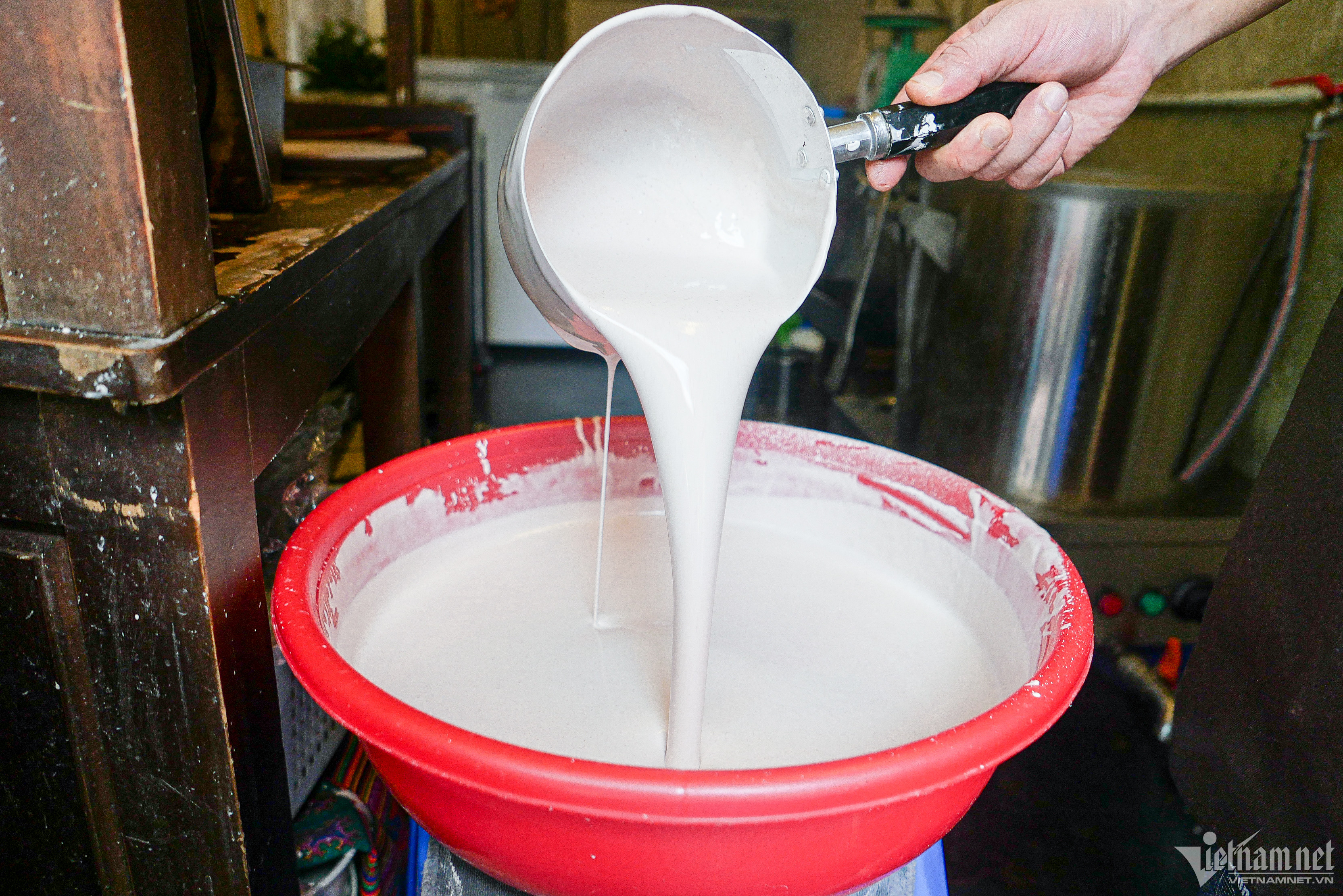
Not giving up on his dream of bringing red pho to Hanoi , he repeatedly went to Ha Giang, wandering to families who still kept the pho profession to ask to learn.
"I don't remember how many trips I've made to Ha Giang . It wasn't until much later, when people in Quan Ba saw that I was really persistent and dedicated, that they taught me and passed on the recipe for making red pho," he said.
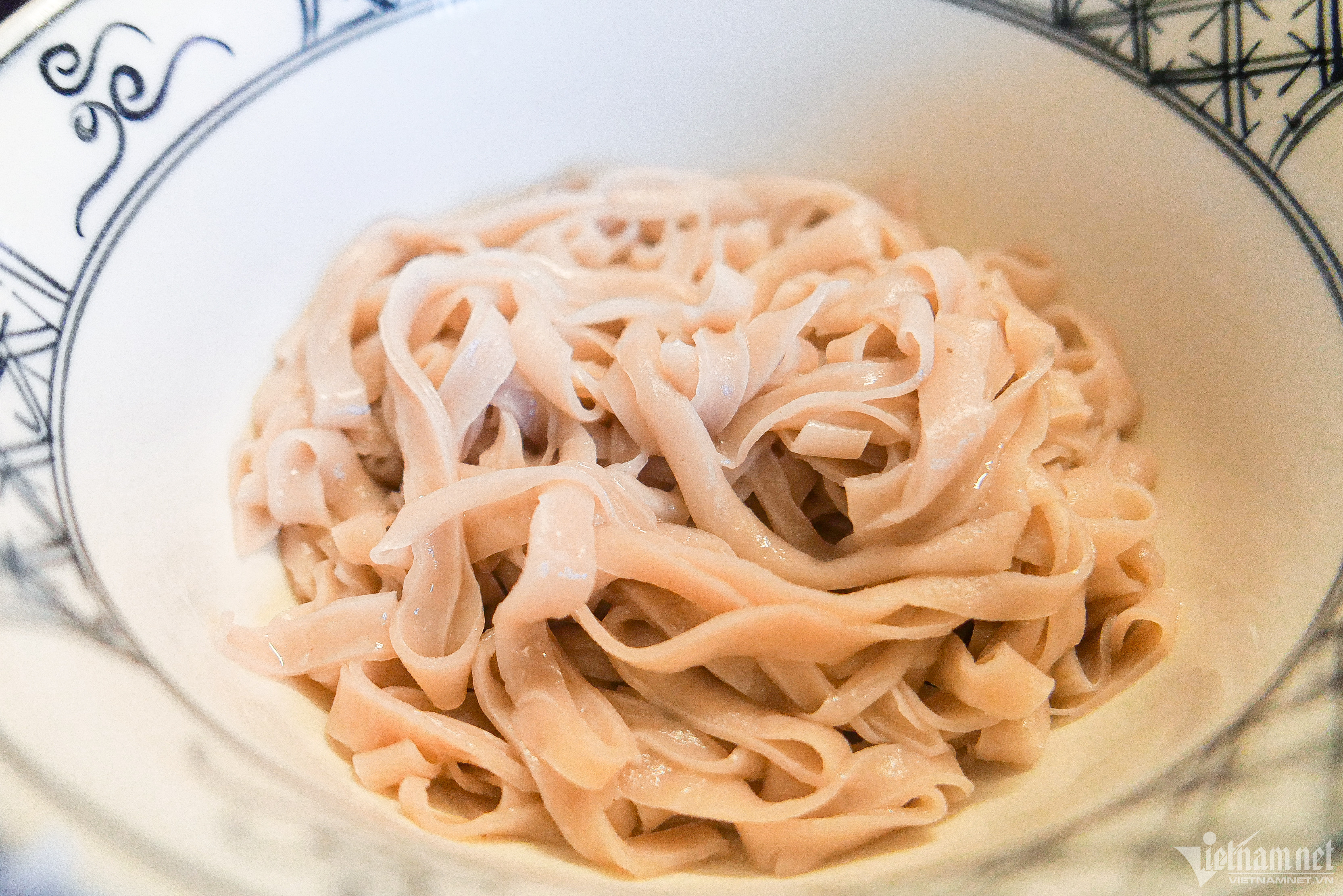
Recently, after a few months of opening, Mr. Tuan Anh's pho restaurant on Nguyen Trung Truc Street (Ba Dinh, Hanoi) has been impressed by many diners and shared on social networks. Many people from far away come to visit because they are curious about the unique color and the way the pho noodles are hand-made directly at the restaurant.
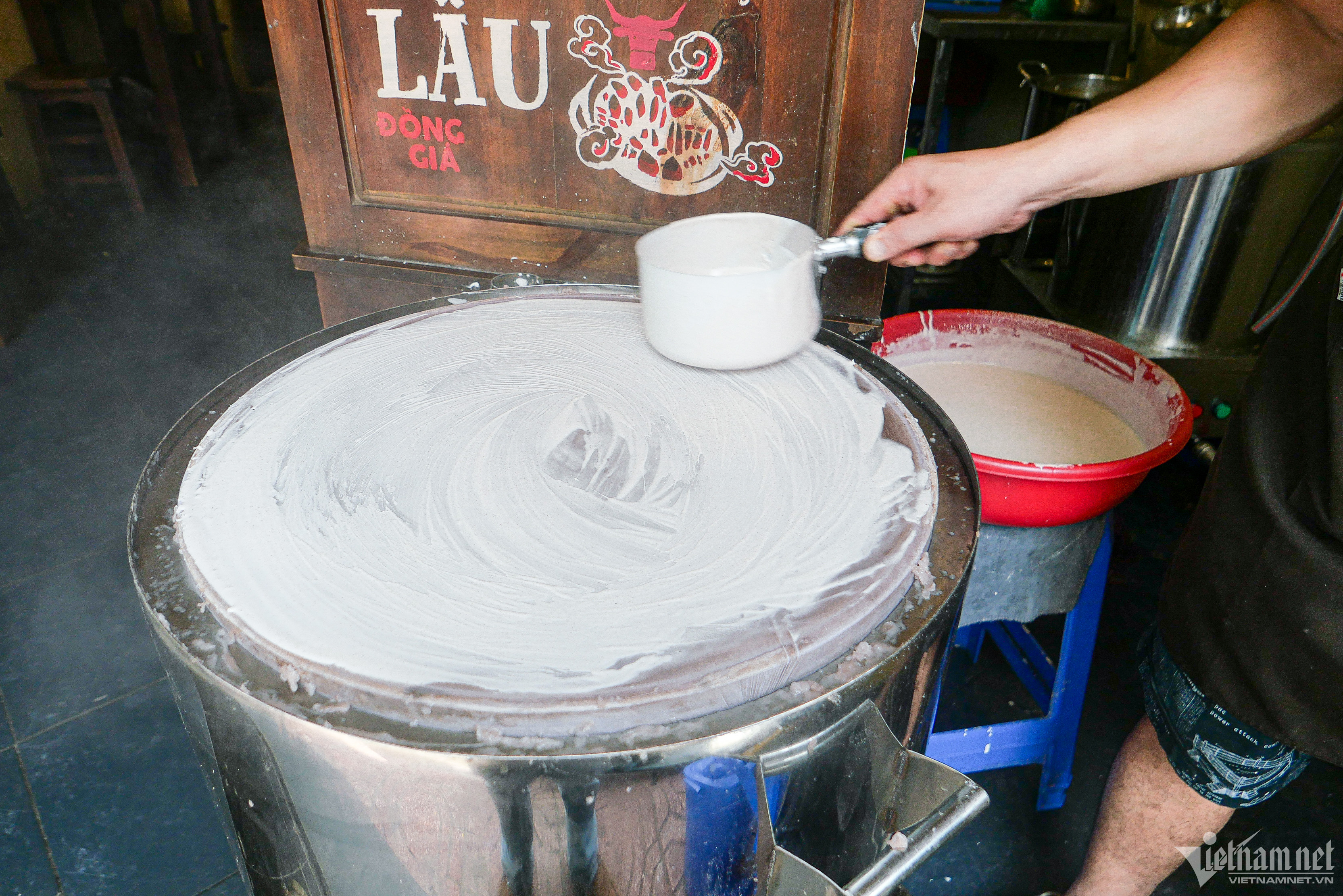
Mr. Tuan Anh said that red pho noodles are made from the milled flour of 4 types of rice, including 2 types of white rice and 2 types of red rice from the Ha Giang mountains. Red rice is grown by people in the Xin Man area, also known as dragon blood rice.
The rice is soaked separately for 6 hours, then ground with water and mixed together in a certain ratio. "This method of mixing flour requires the chef's delicate sense and experience. Even with a fixed recipe, the quality of pho noodles still changes due to environmental factors," said the restaurant owner.
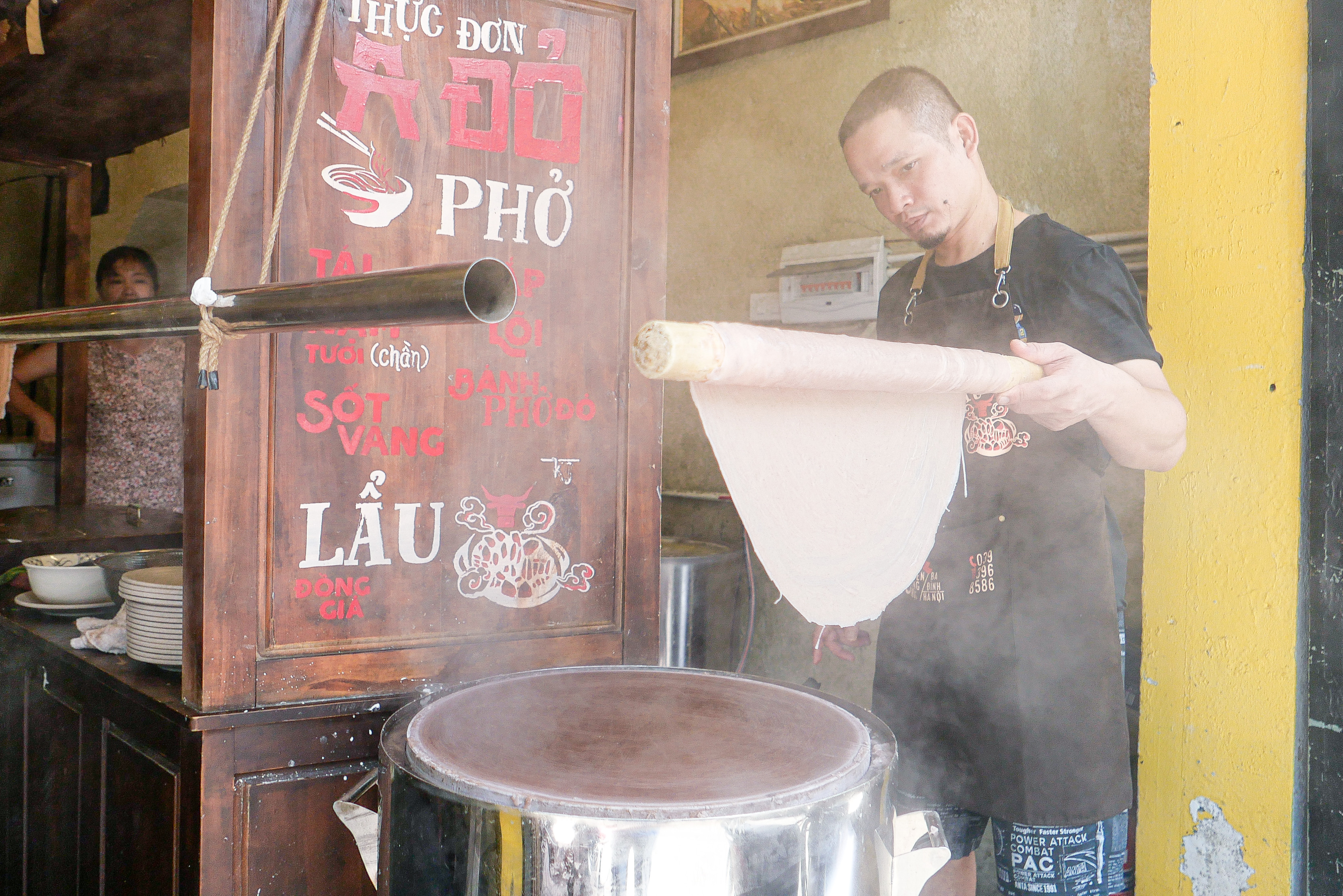
Mr. Tuan Anh placed the rice noodle steamer right in front of the restaurant. The steaming pot became an impressive highlight. The rice noodles were cooked in the steamer for nearly 2 minutes.
After being coated, the rice noodles are skillfully dried, folded, and cut into bite-sized pieces. The rice noodles are made and sold as they are made to ensure freshness and softness.
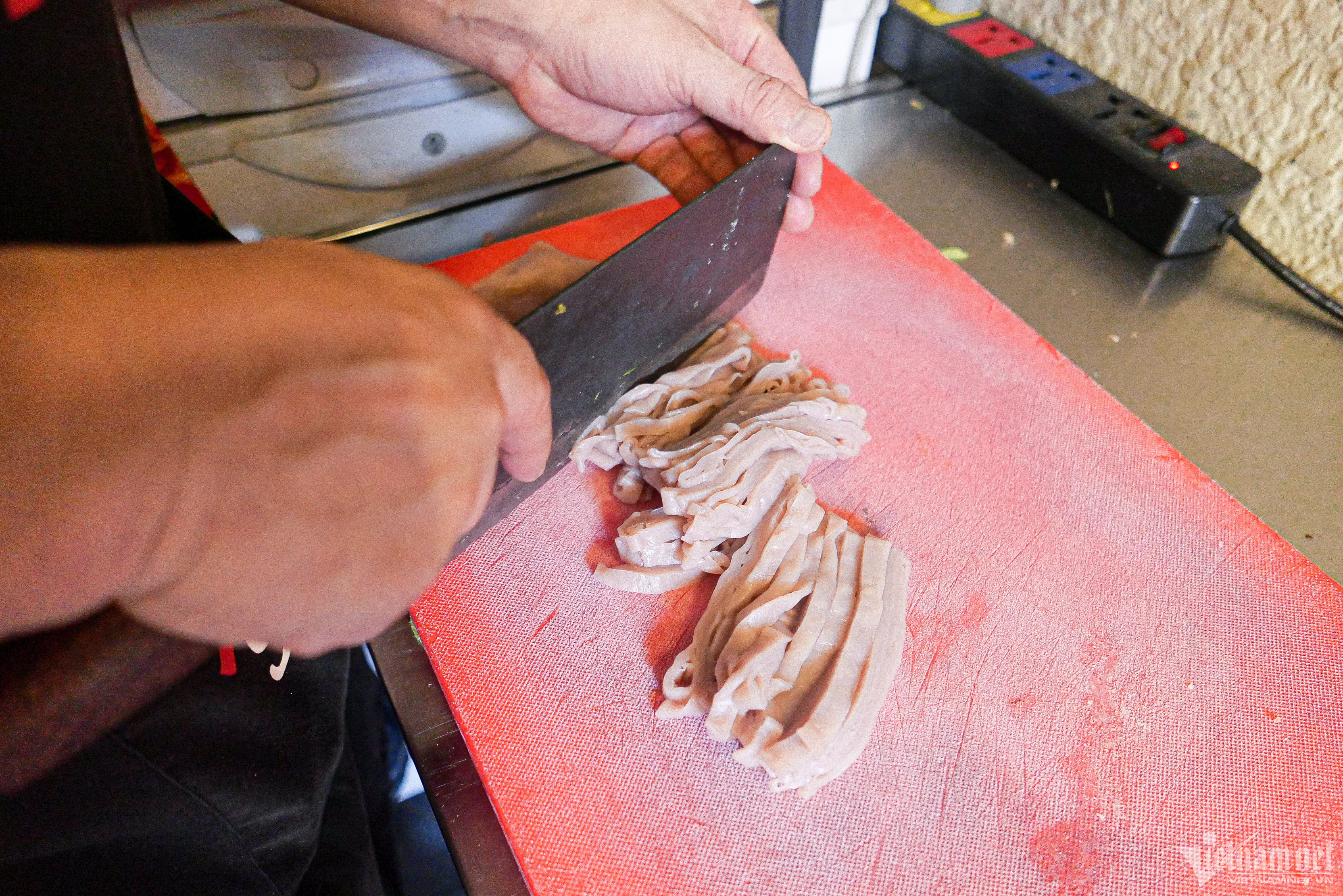
"I was determined to bring this pho noodle dish to Hanoi not only because it is delicious but also clean and safe for health. This type of noodle can be kept for a long time without falling apart and does not cause bloating when eaten for many consecutive days," said the restaurant owner.
"Many customers who come to the restaurant see that making pho noodles is too complicated and time-consuming, so they worry that my business won't be profitable. I just smile. I'm passionate and love it, so even though it's hard, I still try," he added.
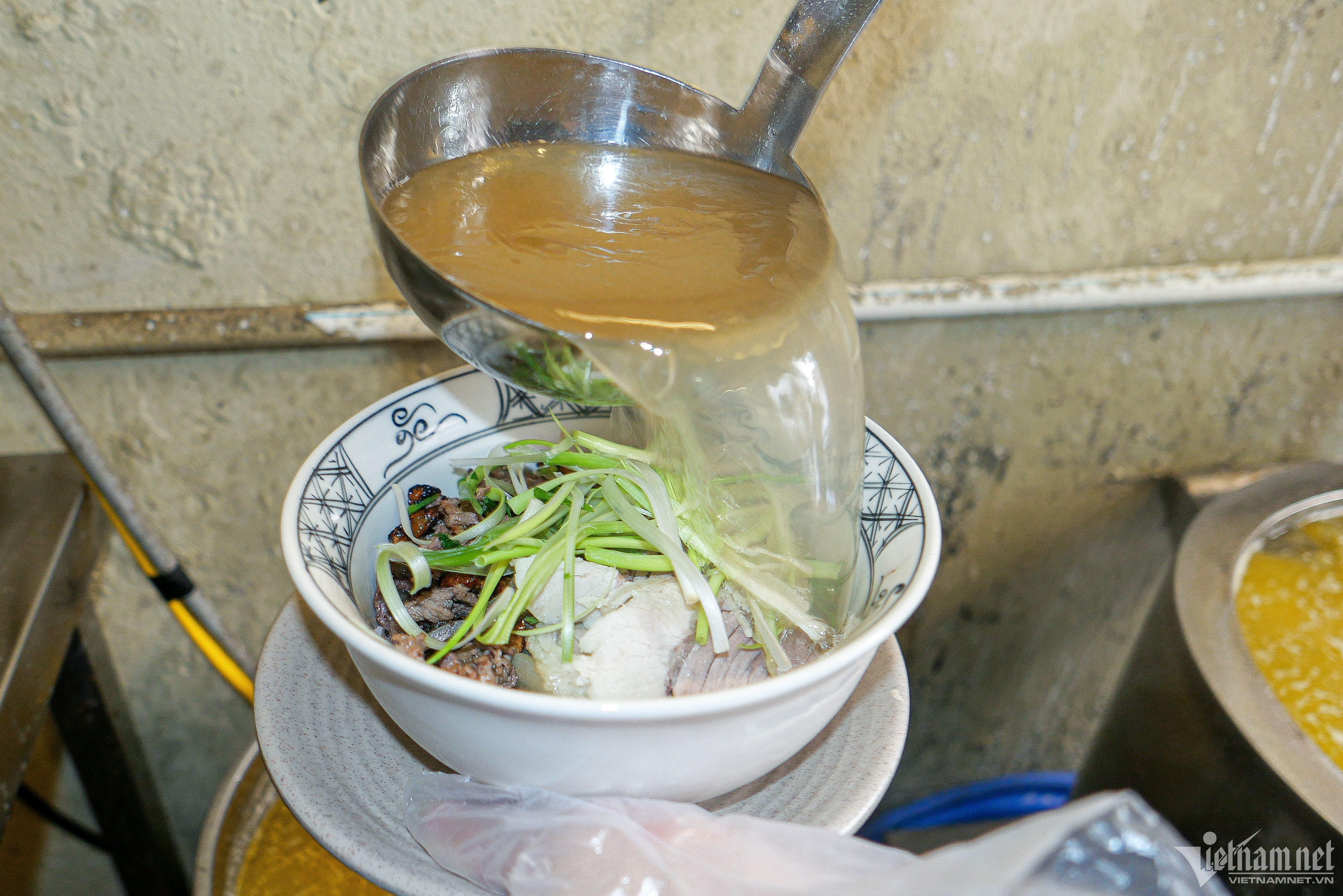
The red pho noodles are made according to the recipe of the Ha Giang people, but the pho broth is still made in the traditional way of Hanoi. The broth is simmered by Mr. Tuan Anh from bones for nearly a day, adding cinnamon, star anise, ginger, onions, and sea worms.
"The pho broth here looks a bit greasy at first glance, but when you taste it, it is sweet and has a pleasant aroma. The beef is fresh and plump. The pho noodles have a special aroma," commented a diner.
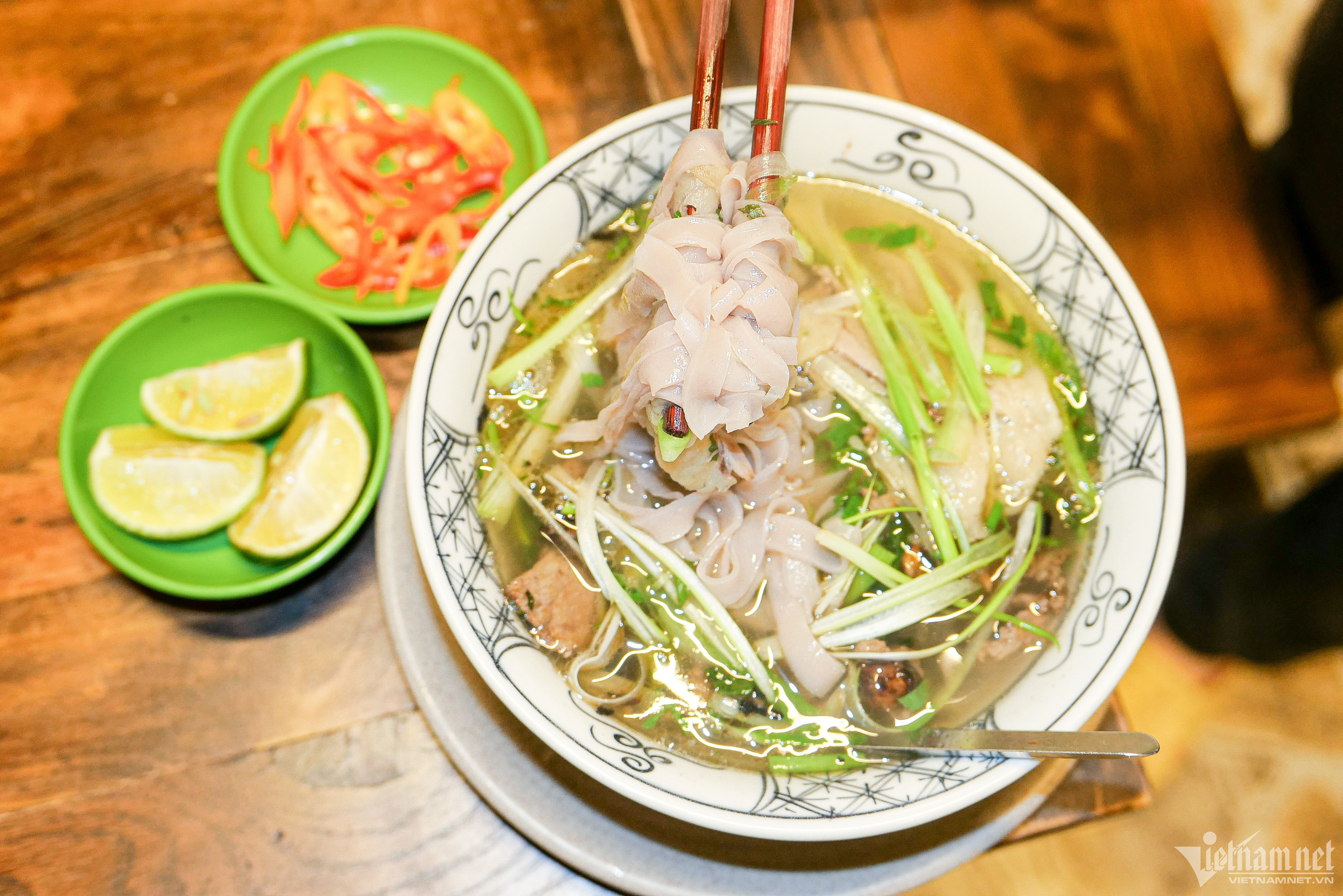
Unlike white pho noodles, red pho noodles need to be soaked in the broth longer to absorb the flavor. The restaurant has a full range of beef pho dishes such as: rare, brisket, flank, pan-fried... On average, each bowl of pho costs 40,000 VND.
Currently, the number of customers at the restaurant is not too crowded but stable. The restaurant space is decorated in a nostalgic style, clean and airy. The restaurant opens in the morning from 7am to 2pm, in the afternoon from 6pm to 10pm. On Sundays, the restaurant only opens in the morning.
Source












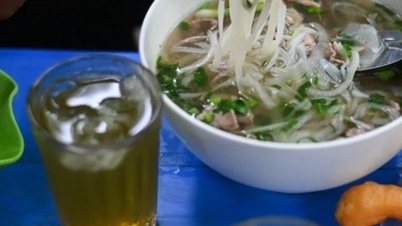




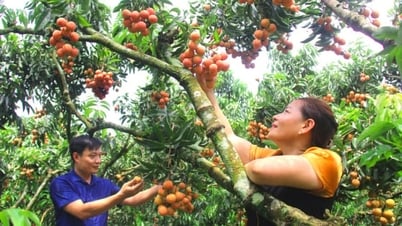






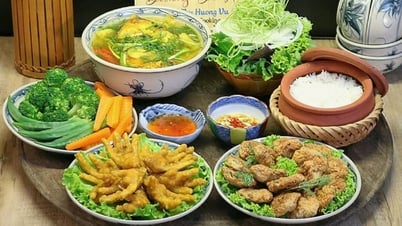












































































Comment (0)